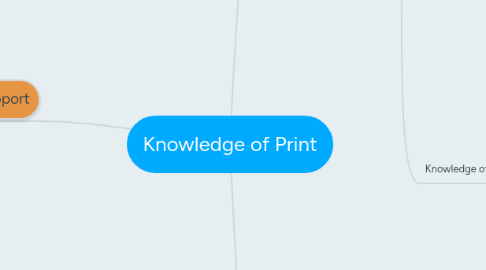
1. Instructional Support
1.1. Book Reading
1.1.1. Engage in meaningful reading where students can practice and incorporate multiple skills
1.1.2. Increased text difficulties
1.1.3. Previews text before reading- looking at vocabulary and difficult words
1.1.4. Teaching and reinforcing word identification strategies
1.1.5. Use of big books to model
1.2. Word Study
1.2.1. word sorting where students categorize words by specific orthographic features
1.2.2. Words based on students level of word knowledge
1.2.3. Use of pictures to represent words and word features/sounds
1.2.4. Word families/ rhyming words
1.3. Sentence Writing
1.3.1. Students create sentences focusing on process of representing sounds across each word.
1.3.2. Reinforce phonics concepts
1.4. Instructional Planning
1.4.1. Step 1: identify the needs and appropriate instruction for individual student
1.4.2. Step 2: consider the range of needs and instructional possibilities for students
1.4.3. Step 3: select instructional approaches that will help development of students
2. Devleopment
2.1. Home influences
2.1.1. Print integrated in all aspects of life
2.1.1.1. Signs
2.1.1.2. Notes
2.1.1.3. Books
2.1.2. Parents reading/ writing seen as a model for children
2.1.2.1. Learn how to hold a book
2.1.2.2. Learn to read left to right
2.2. Instructional Influence
2.2.1. School influences beginning with preschool
2.2.1.1. Story telling
2.2.1.2. Language experience stories
2.2.1.3. Writing tasks
2.2.2. Direct instruction
2.2.2.1. Skill Instruction
2.2.2.2. Opportunities to read and write
2.2.2.3. Increased text difficulty
2.2.2.4. Literacy experiences shape students
2.3. Word Awareness and Learning words by sight
2.3.1. Word Awareness
2.3.1.1. Stage 1: Sentences as semantic units without distinguishing individual words
2.3.1.2. Stage 2: Separate sentences into subjects and predicates
2.3.1.3. Stage 3: Identify words that compose sentences
2.3.2. Sight Word Learning
2.3.2.1. Identifying similar features of words through comparing
2.3.2.2. Word discrimination- Need to identify more features in words to distinguish differences/similarities
2.3.2.3. Repetition of words
2.3.2.4. Concrete words are easier to understand than abstract words
2.4. Knowledge of word elements
2.4.1. Phoneme Awareness
2.4.1.1. A child's understanding of oral sound components and their ability to process sound units across words
2.4.1.2. Begin with making distinctions of one sound in words (ex. Sit, Hit)
2.4.1.3. Correlation between development of phoneme awareness and reading
2.4.1.4. Develops through hearing and seeing rhyming words
2.4.1.5. Playing with word families
2.4.1.6. Developmental spelling
2.4.1.6.1. Prephonemic stage: words represented with letters and numbers but spelling has no resemblance to word
2.4.1.6.2. Early phonemic spelling: Using alphabetic writing to represent sounds of words
2.4.1.6.3. Letter name/ Phonemic stage: sounds across words are represented more fully
2.4.1.6.4. Transition stage: representation of within-word patterns
3. Assessment
3.1. Storybook Reading Procedure
3.1.1. Listening to children read
3.1.2. Student reads favorite book to instructor
3.1.3. As student reads, instructor observes and draws conclusions based on if students are reading based on knowledge from writing or pictures
3.1.4. Looking for: Word identification, word substituting, responses for unknown words, fluency, reading word by word
3.2. Alphabet Knowledge
3.2.1. Knowing letters and names help students with reading and writing
3.2.2. Recognizing symbols and sounds
3.3. Spelling Knowledge
3.3.1. Ability to segment words into phonemes
3.3.2. Indicator of students phoneme awareness
3.4. Word Awareness
3.4.1. Students concept of word is tied to their ability to to learn sight words and to pay attention to letters within words

